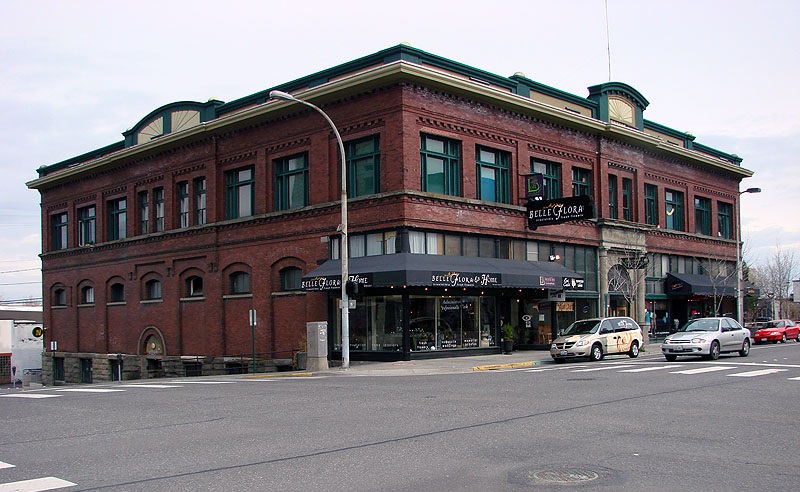
Developer Bob Hall got his start buying an old building in a deteriorating downtown to house his import business. He didn’t know about due diligence, deferred maintenance or building codes and after having to refinance then sell his house to fund the required repairs swore he’d never buy another building… until he looked at his tax return. He was making more money renting out the extra space than the import business was pulling in… and he was hooked.
At the time a new regional mall had just opened outside of town and the long-time retailers were abandoning the downtown like it was a sinking ship. Hall looked around at all the empty buildings that had been built in the late 1800s through the early 1900s and saw the structural integrity as well as the beauty* of these historic properties selling for less than replacement cost. *Often covered up by later ‘modernizations’.

Fast forward some thirty years and he now owns almost thirty historic commercial and mixed use properties throughout the Northwest. At acquisition, many if they were being maintained at all were kept just barely standing until someone bought and/or condemned them to move in with the wrecking ball. Leaking roofs, worn out plumbing, outdated electrical systems and those ‘modernizations’ were the rule rather than the exception. Plus there were the uninvited guests of various biological classes; hominid, avian and other.

If you’re like me at this point you’re thinking how do these deals pencil; fire safety, ADA and seismic upgrades haven’t even been mentioned? Well Bob wrote a book explaining how he handles all the issues called “This Old Building: A Guide To Buying, Restoring, and Managing Historic Commercial Property“. He describes it as ‘Historic CRE 101’ and while it has enough before, during and after pictures to qualify as a coffee table book it also reveals his methods for selecting properties and rehabbing them in a way that doesn’t break the bank.

Bob tells the story of his projects and the process in a very engaging way, with enough detail to fill in the blanks but without the five page explanations of how to secure HUD financing or do a 1031 exchange*. He goes into what works as well as what didn’t and the lessons learned from the ones that didn’t go so well. While three decades of experience has helped him raise his batting average Hall said he wrote the book he wished he had starting out. *If you do need more detail or professional help with CRE/Apartment financing or a tax-free exchange Ashworth Partners can connect you with the appropriate resources.
After reading the book I recently had a chance to sit down and talk with the author. What follows is a brief synopsis of our conversation… much more in the book and it’s a good read.
One of the larger questions I had was about market selection and asked how he picked the market for his first acquisition. Bob said it was because his car broke down there when he happened to be driving through. While waiting for it to be repaired he started looking through the listings and found one to make an offer on. The offer was accepted, unlike the many he’d been making in the larger market where he lived at the time and so there he was.
The bigger picture he said is that there are cities and towns all over the west filled with historic buildings that most of the locals don’t appreciate. When suburban malls opened in the 70s and 80s the retail moved out there leaving dying downtowns in their wake. With no street level retail the vitality disappears and then the other tenants do too. Now that people are once again appreciating the live, work, play, walkable downtown lifestyle those historic properties can become the building blocks for revival but often those who grew up near a deserted downtown have accepted the status quo as unchangeable and don’t see the opportunity.
Ironically there is a kind of a yin/yang thing with finding properties in other markets because while opportunity may be there that the locals don’t appreciate, one of Bob’s keys to keeping costs down on the rehab is to be onsite every day managing the project if not swinging a hammer yourself. So it seems it would pay to start by looking around the place where you live to see properties that you may have gone by a thousand times without the noticing the possibilities.
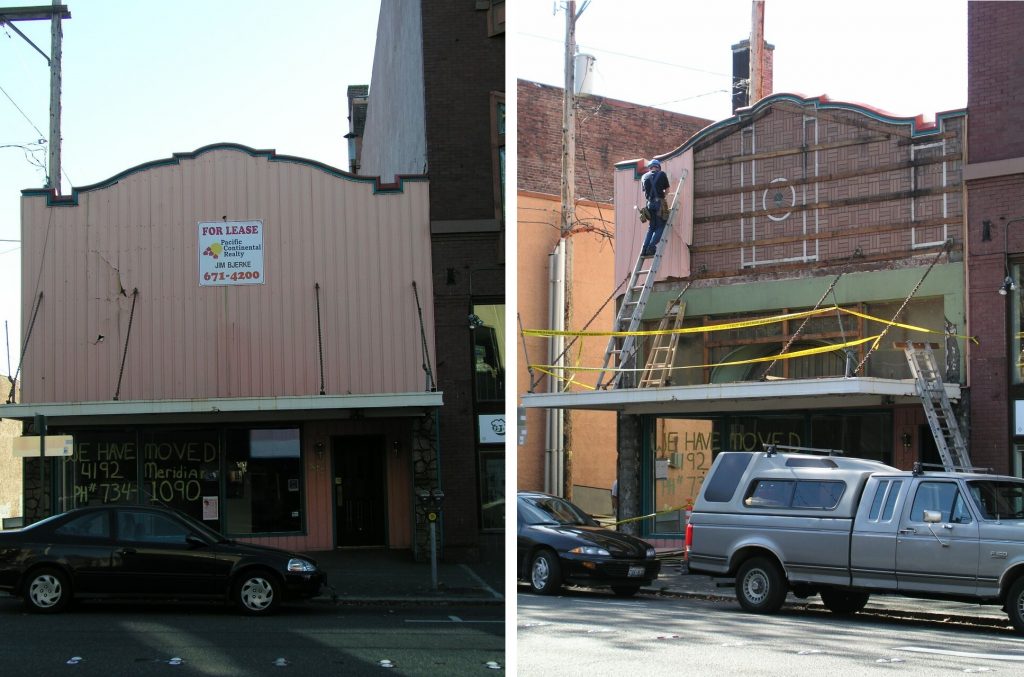
The beauty of a historic building can be hidden behind late 20th century exteriors added to ‘modernize’ the look. One of the little gems in Hall’s portfolio was covered up by a corrugated metal exterior, drop ceiling and carpet. Once they pulled off the metal, got rid of the false ceiling and the carpet a beautiful brick building with high ceilings, clerestory windows and a restorable hardwood floor was revealed which is now home to a very inviting restaurant.
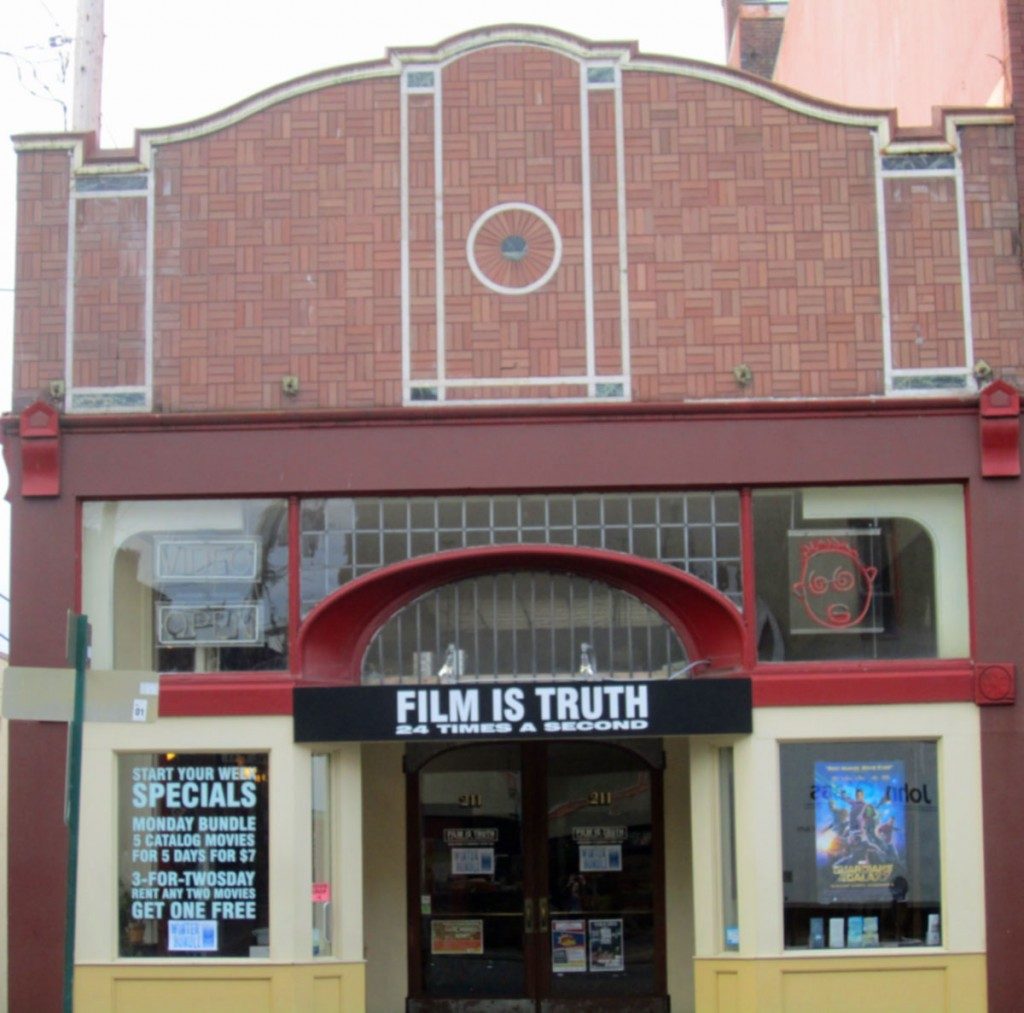
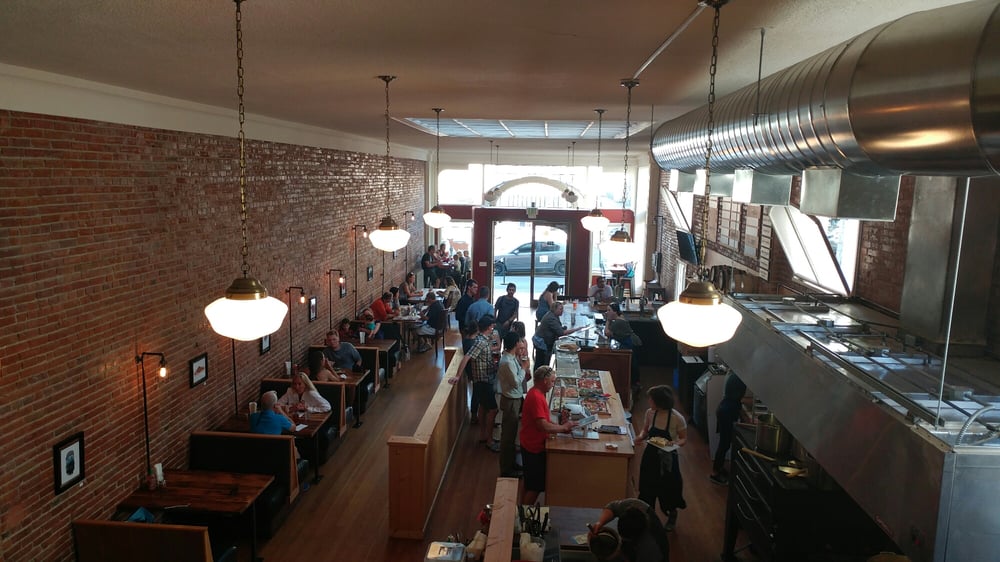
One of the important ways to control rehab costs Bob says is to do as much as possible as the owner before bringing in architects, engineers, contractors and permits. Although he has staff now in the beginning it was him, his sons and a few hired helpers doing as much of the work as they could. They focused on getting the building looking good enough to attract tenants and get leases signed before spending the big dollars.
One of the biggest rewards for Hall is that he’s able to provide affordable housing for people living downtown. A number of his buildings started as hotels or bachelor apartments over retail and with thoughtful remodeling have been turned into modest studios and 1-beds that are within the budget of many local residents while still making the returns needed.

If there’s a secret to success it’s the same one every successful real estate investor learns; never sell. Bob has sold a few properties over the years but he told me that his business model is to buy a good building at a good price, rehab wisely, get it leased and stabilized then refinance to go buy another one; rinse and repeat.
Rehabbing and operating historic commercial and mixed use buildings is not for everyone but if you’re looking for a niche, ‘This Old Building’ may be a good place to start.
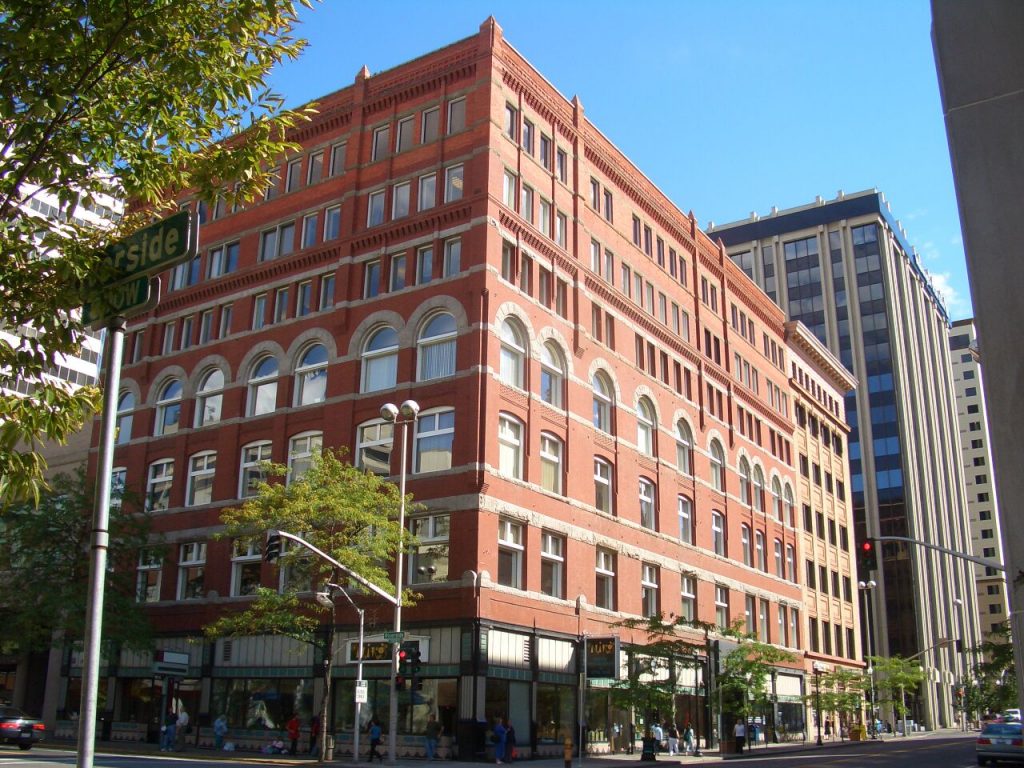
Big thanks for many of the photos goes to Kane Hall, CEO, Daylight Properties; www.daylightproperties.com. For both those here in the post but also in the book as well. As I mentioned the This Old Building is full of before, during and after shots as well as when new and/or under construction photos from back in the day.
I think it’s such a great idea to take older commercial buildings and revamping them into apts. I personally love the idea of living in a historic apartment, especially if it been modernized. I’m sure that it takes a lot of work an expertise to be able to restore a commercial building.
I have read the book that you quoted in this article and it was helpful especially for first-time restorers. It outlines practical guidelines to make your restoration dream a reality. It’s a total must-have.